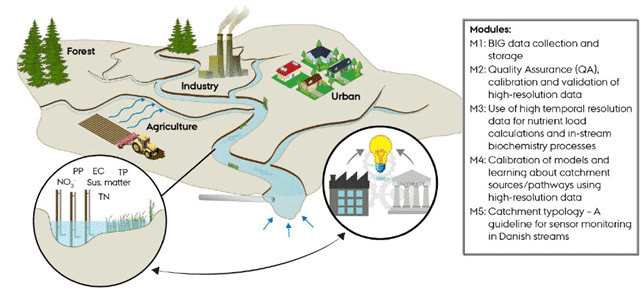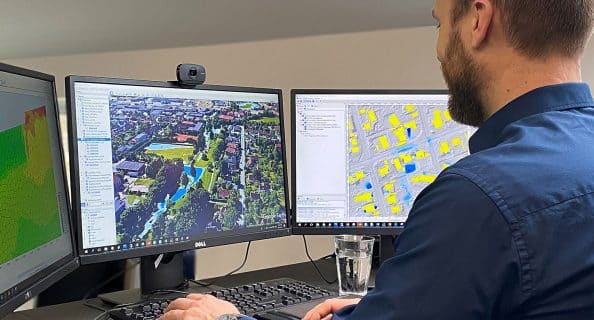Sofie van’t Veen from Envidan is well underway with her 3-year industrial PhD project, SENTEM: Sensors Application for High Temporal Resolution Monitoring in Danish Streams.
SENTEM’s goal is to generate new ideas and knowledge about the future use of sensor data with high temporal resolution, by using machine learning for next-generation monitoring of water quality in Danish watercourses.
Through the project, Sofie will test sensors, develop methods for quality assurance of data, set up measurement campaigns in relation to rainfall-runoff as well as contributions from open terrains. Sofie is writing her industrial PhD in collaboration with the Department of Bioscience at Aarhus University, Hach and Envidan.
More certainty in measuring every minute
Today, nutrients in Danish watercourses are measured manually every month in most watercourses and every 14 days in a few of them – which means great uncertainty. This is why the project is highly relevant, as we are likely to see a future where the use of sensors measuring values every minute will become commonplace. Moreover, the current method is a handheld process that costs the Danish society approximately DKK 30 million per year. This means that there is also a lot of money to be saved by implementing a new generation of monitoring.
The use of sensors for monitoring is widespread in wastewater treatment plants, but not yet in watercourses. The project is an investment made within Research and Development in Envidan, building on Envidan’s competencies within the water cycle.

Modules in water quality monitoring
Benefits of online high-frequency data
Possible benefits of obtaining online high-frequency data at monitoring stations in watercourses could be to:
- Gain knowledge on the accuracy of calculating nitrogen and phosphorus transport (compared to normal point samples – what is gained in terms of bias and dispersion) – e.g. for use in the annual national marine load inventories.
- Gain experience with the resource consumption of online measurements and sensors in relation to care, calibration and data management.
- Gain new knowledge on sources of N and especially P, including knowledge on retention and transport pathways.
- Achieve faster and more reliable determination of trend at a given level.
- Improve knowledge on N and P retention in catchments.
The five overarching objectives
- To develop an innovative methodology and guide for the use, quality assurance, calibration and validation of high temporal resolution data for sensor monitoring in different types of Danish watercourses by means of a methodology and guide for the use, quality assurance, calibration and validation of high temporal resolution data for sensor monitoring in different types of Danish watercourses, by the use of machine learning.
- To establish a thorough understanding of the importance of high temporal resolution data for the calculation of nutrient loads at daily, monthly and annual time steps.
- To investigate whether nutrient sources and pathways in catchments can be identified using high temporal resolution data.
- To investigate trade-offs between high temporal resolution data when calibrating a SWAT model to improve the model under extreme climate conditions.
- To investigate whether overflows of untreated wastewater and/or sources such as surface runoff into watercourses during storm events can be detected and quantified using high-resolution sensor data, radar observation of precipitation and machine learning.
